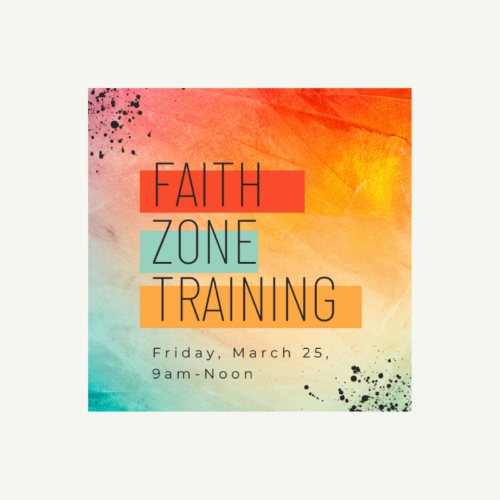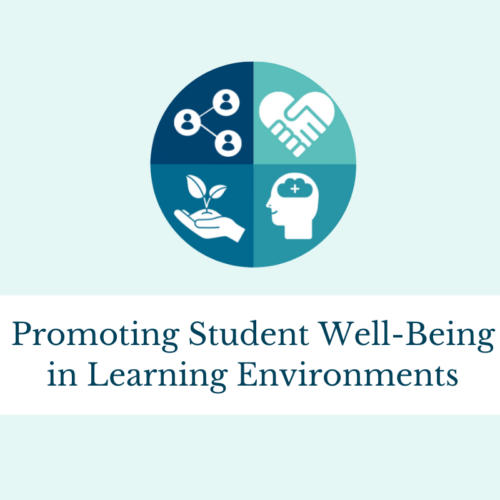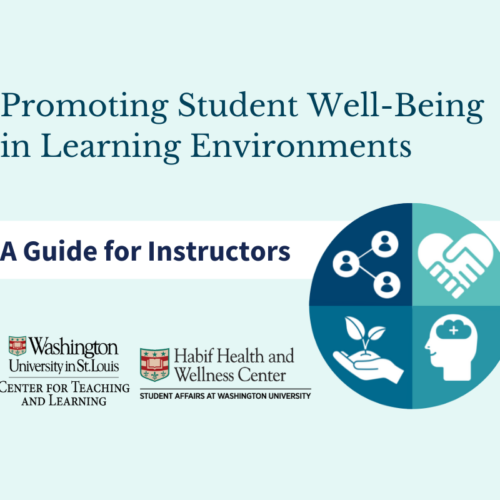How to Respond: Facilitating Productive Discussions about Current Events
 This post is by guest author, Lorien Carter, Associate Professor of Practice, Brown School of Social Work, Washington University in St. Louis.
This post is by guest author, Lorien Carter, Associate Professor of Practice, Brown School of Social Work, Washington University in St. Louis.
This Teaching Tip (originally posted for Brown School Faculty in November 2016) is being “re-issued” with a few updates today in an effort to provide you with very timely information for how to introduce and facilitate productive discussion about current events.
Microaggressions . . . election results . . . DACA announcements . . . court case verdicts . . . our classrooms are spaces where these, and so many more, “hot button” topics and conversations happen. Sometimes, we’re prepared for these since Social Work and Public Health content is often focused on calling attention to disparities and injustices and then building skills to address those in professional practice. Other times, these conversations are driven by current events or by other factors external to the course content. These are the ones that are most likely to catch faculty off guard or unprepared.
While microaggressions, the election results, and the recent verdict are not exactly the same, the strategies for how to handle them when they arise in your classroom are similar. That’s why the teaching tip is simply called “how to respond.” You can use these tips with a wide variety of difficult conversations in your classrooms (and in your other professional relationships, and in your personal relationships, and everywhere!)
Tip #1: Respond. Even if you aren’t sure exactly what to say. Even if there are only 2 minutes left in class. Even if it’s the last day of class. Even if you’re not entirely sure that anyone heard the statement. Even if you aren’t sure that you heard the statement correctly. Respond. Not responding is perceived by students as faculty either (at worst) agreeing with the comments or (at least) not caring enough to take actions to insure that everyone is held accountable for creating and maintaining an emotionally safe and inclusive classroom climate. So, respond. Respond even if it’s awkwardly worded. Respond even if it is imperfect. Respond.
Tip #2: Create a respectful and inclusive classroom environment, from day 1, which is intentionally structured to productively address hot topics when they arise. State your expectations in the syllabus and verbally on the first day of class. Create ownership and accountability by following these tips for co-creating ground rules. You may also find it helpful to give students some guidance about what respectful dialogue can look like, sound like, and feel like.
Tip #3: Model civil discourse strategies, including calling attention to the diversity of perspectives on an issue. It’s important that we not inadvertently (or on purpose) emphasize a particular viewpoint or perspective as being the “only right” one. Our role as facilitators of dialogue is to ensure that every student in our classes feels safe to share their perspectives. This can be challenging when we assume that everyone shares the same perspective but the reality is that our students’ backgrounds and identities aren’t always known and if we assume that there’s only one viewpoint to a discussion, we run a significant risk of shutting down some members of our classes and community. One way to ensure that we’re being objective is to ask for other perspectives to be voiced. Saying things like: “has anyone heard a different response to {the verdict}?” or “what other perspectives about the {DACA policy} haven’t been brought up during our discussion today?” “How would having those perspectives in the discussion change the ideas or suggestions or solutions?” These types of questions build critical thinking skills for students as well as modeling for them how to engage in civil discourse.
Tip #4: Use a communication framework like OTFD to respond when a hot button topic or micro aggression occurs. OTFD stands for “Open The Front Door” to communication. It also stands for the steps in the framework: O is for Observation. State what you observed, heard, saw in concrete and behavioral terms. T is for Think. Share your thoughts, or solicit thoughts from other students, about what was observed. F is for Feel. Describe your feelings or emotions, or solicit these from other students, about the situation. D is for Desire. State your desired outcome or what you want to happen in order to resolve the situation.
Here’s an example (this is hypothetical; it is NOT from an actual WUSTL class discussion): A student makes a comment about how law enforcement officers have an even harder job these days since people are recording them during routine traffic stops and several other students in the class have a strong negative reaction to the comment. You could use the OTFD framework to say something like:
I’d like to pause for a moment and talk a bit more about what I just heard and saw happen here. I heard Student A say that law enforcement officers have been unfairly treated by the presence of onlookers with cell phones and I saw Students B and C frown and shake their heads in disagreement (Observation). I think there are a lot of different perspectives about this particular issue. On the one hand, we may find ourselves concerned that the split second decisions that police officers have to make on a regular basis are now being filmed by bystanders who aren’t able to provide adequate context for what actually happened at the scene. On the other hand, we may think that every action of police officers should be unbiased and above reproach, regardless of whether or not there’s a body camera or a bystander with a cell phone capturing video of the situation (Think). I feel uncomfortable moving forward with another discussion topic (Feel) until we acknowledge how this comment could make others in this class feel. Someone might now feel unsafe sharing that they have relatives on the police force and that could silence their participation in the class. I want to make sure that we can openly discuss the different perspectives on this while not silencing any voices (Desire) so I’d like to hear from some of you about what you need from this discussion right now.
If you want more information about OTFD, watch this short video that describes OTFD with examples of how to use this strategy at home, with partners or children as well as in other emotionally charged situations, like classes. And then, watch this video that describes OTFD in the context of managing team conflicts. (See, these tips are useful in so many interactions!)
Tip #5: Debrief after the difficult discussion. You can debrief with students and you can also do some self-reflection (or schedule a consultation with me to reflect and process even more). With students, check in to make sure they feel like there was resolution to the issue (when resolution is possible) or that there was attention paid to their perspectives, because sometimes, resolution isn’t possible or at least isn’t possible at this moment in time. One quick debrief strategy is the “fist to five” feedback. This is a non-verbal rating of how they’re feeling using a 5-point scale. They raise their hands and from a continuum of the fist, symbolizing that they are not feeling resolved and need to stay with the discussion longer or in another way, to all 5 fingers being raised if they’re feeling resolved and ready to move on.
Many of these tips came from a recent webinar by Magna Publications and the Teaching Professor called: How to Create A Transformative Learning Experience for Students By Managing Hot Moments and Difficult Discussions in the Classroom. I participated in the webinar and received a collection of handouts and resources. You can email me if you’d like this or the many other useful resources for facilitating classroom discussions that I make available to Brown School faculty in our Blackboard Faculty Teaching Organization.
If you’d like to debrief about a discussion in your class this week (or any week), if you’d like to practice responding to difficult topics in class, or if you’d like to discuss any other teaching strategies, please email me to schedule a consultation session. I look forward to working with you!
Happy teaching!
Lorien Carter, MSW
(pronouns: she/her/hers)
Associate Professor of Practice
Faculty Instructional Coach
George Warren Brown School of Social Work Washington University in St. Louis
(o) 314-935-7268
(e) lcarter@wustl.edu
Readers may also be interested in attending the upcoming community discussion about addressing white supremacy on campus that is co-hosted by The Center for Diversity & Inclusion and The Teaching Center. For more information on this event, please follow this link.





